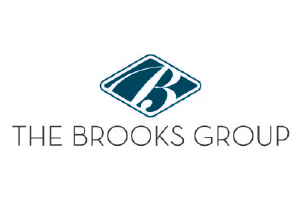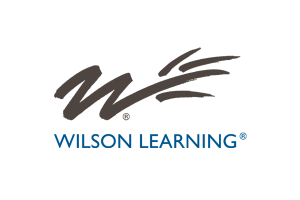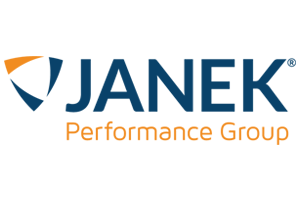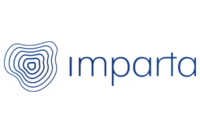Prior to spring 2020, we had some effective workshops in deployment designed to help employees in customer-facing roles meet and exceed critical milestones in the selling process. The workshops were well received by attendees and leaders, and, more importantly, they helped attain measurable results.
They were also in person. Some workshops were just a day in duration, and one required a few days, depending on travel requirements. We asked attendees to prepare by clearing their calendar and being present. As inefficient as this process may sound through a 2021 lens, everyone could observe the benefits. The workshops afforded salespeople from disparate offices the opportunity to learn, bond and solve challenges together. They would enter the experience from a satellite office and leave not only with skills but as part of a cohort and a connected whole. More workshops were being requested, and more were in development.
Then, COVID-19 hit. Everyone had to contemplate new ways of working and, more importantly, determine how to demonstrate continuity in value. Maybe we were lucky. In previous years, we had partnered with human resources (HR) to evolve onboarding from binders and paperwork (which inevitably wound up in a drawer) to an online, role-based experience that was iterated regularly. But the workshops …
I remember discussing the workshops with my team after one of the first company meetings about COVID. An executive listening in had remarked, “Can’t you just do that over Zoom?” It was a fair question, but the learning professional in me shuddered. All that I had researched, read and heard from peers warned me that virtual facilitation was more than just a “lift and shift.” It was wholly different. A full day (or days) of virtual training sounded untenable me as a facilitator, much less for the participants. And if the experience did not demonstrate continuity in value, what would it mean for the results? We had to reinvent the experience on a virtual medium, not replay it.
The Design
The blended learning approach is not revolutionary. Mike Kunkle has been advocating for the flipped classroom for years, and the concepts Josh Bersin presented in “Learning in the Flow of Work” sounded great. Last year was the perfect moment to start implementing blended learning, with workshops we could no longer deliver in person.
We decided to transform the multi-day workshop, knowing it would take the greatest amount of work and be the most expensive for the organization. We strove for more than a temporary fix, instead working for an outcome that was future-proof. After we divided the key learning objectives into unique episodes, it was a matter of how learners would experience them. Here is our design:
Week 1: Pre-work
Estimated time for completion: 10 to 20 minutes
The learners (and leaders) familiarize themselves with key concepts relevant to completing their job. We used our learning and enablement system to keep this experience varied, lightweight and inviting. There were videos to watch, scenarios to evaluate and timed research with responses. The objective was fluency, not mastery. We knew if we discouraged the audience at this stage, the rest of the training would be a greater struggle for them. Our audience had a week to fit this pre-work into their flow of work.
Week 2: Virtual Instructor-led Training Experience
Estimated time for completion: one 90- to 120–minute session
The objective of the virtual instructor-led training (VILT) session was for learners to discuss and practice what they learned in week 1 to work through the sticky points. Just like an in-person session, we limited capacity so that we could work the entire room. We also provided some architecture of how to engage. There were just new ways to do so: be on camera; use the chat; interrupt the facilitator, not your peers; build on your peers’ comments with “Yes, and”; and be comfortable with being uncomfortable.
Ultimately, what we found to be most different from in-person workshops was the choreography. To drive an engaging experience, we had to adjust the “keep them doing” knob to 11: Chime in on polls with your phone. Populate a short answer on the screen. Discuss and strategize or role–play in a breakout room. Vote for the contributions that wowed you the most.
Week 3: Post-work
Estimated time for completion: 5 to 10 minutes
Now that attendees had learned, practiced and ironed out some of the kinks, it was time to apply and respond. During their week of post-work, they acted on their new approaches as a part of their day-to-day work, reflected on them and responded to them. How they responded depended on the learning objective. In some cases, it was a five-minute video response of what worked and what did not. In others, it was evidence of a prospect’s response in an email or submission of a touch plan with which step worked and why.
After inspection of their work, we provided individual feedback on everyone’s submission and shared them in a common area. Now, in a couple of clicks, members of the cohort can draw ideas from and rank themselves against the work of their peers — and revisit these materials as often as they need to.
This week, pre-work also began for their next VILT session. We rinsed and repeated until the series of learning objectives was complete.
4 Takeaways
We have four major takeaways from this experience. Firstly, our partnership with sales leaders was critical — and not just to collaborate on the content and take part in the workshops. A blended approach like this one takes a village. There are a lot of communications required to guide the audience between the different sessions and modalities, in addition to the automated reminders from our learning and enablement platform.
Secondly, the course materials had to change from a “write-in” manual to downloadable content. In the past, salespeople would tear pages out of their book and post them at their desk, and leaders would use their book to coach. This part of our experience does not feel like “continued value” just yet, especially for learners who prefer analog.
Thirdly, although there were some tradeoffs, the selling points for our detractors (and, incidentally, our largest fans of in-person training) were that their salespeople were less disrupted in their commitments and that though the virtual workshop extended beyond the timeline of a typical in-person session, the benefits of zeroing in on one key objective at a time meant better retention.
Finally, there was greater qualitative proof than in-person training. Being able to “pause the experience” during the “apply” week and show wins, losses and where learners needed coaching in a specific area helped highlight where individuals were in their development instead of highlighting the ones who only showed up well inside the classroom. The blended approach also provided examples for future workshops and highlight reels for other experiences.
As early results for our blended workshops begin to mirror our in-person sessions (phew!), we might keep the new design. In fact, we may even apply what we have learned to optimize shorter in-person sessions when the opportunity to conduct them returns.










